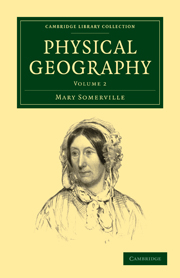Summary
Tropical Asia is divided by nature into three distinct botanical regions: the Malayan peninsula, with the Indian Archipelago: India, south of the Himalaya, with the island of Ceylon; and the Arabian peninsula. The two first have strong points of resemblance, though their floras are peculiar.
FLORA OF THE INDO-CHINESE PENINSULA AND THE INDIAN ARCHIPELAGO.
Many of the vegetable productions of the peninsula beyond the Ganges are the same with those of India, mixed with the plants of the Indian Archipelago, so that this country is a region of transition, though it has a splendid vegetation of innumerable native productions, dyes of the most vivid hues, spices, medicinal plants, and many with the sweetest perfume. The soil in many places yields three crops in the year; the fruits of India, and most of those of China, come to perfection in the low lands. The areng palm is peculiarly characteristic of the Malayan peninsula; it yields sago and wine, is an ugly plant, covered with black fibres like coarse horsehair, so strong that cordage is made of it. Teak is plentiful; almost all that is used in Bengal comes from the Birman empire, though it is less durable than that of the Malabar coast. The hopcea odorata is so large that a canoe is made of a single trunk; the cardonia integrifolia is held in such veneration that every Birman house has a beam of it.
- Type
- Chapter
- Information
- Physical Geography , pp. 81 - 92Publisher: Cambridge University PressPrint publication year: 2009First published in: 1848



